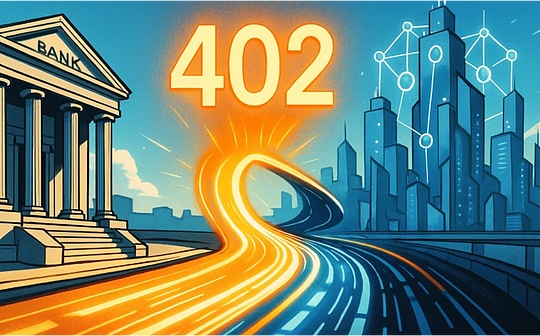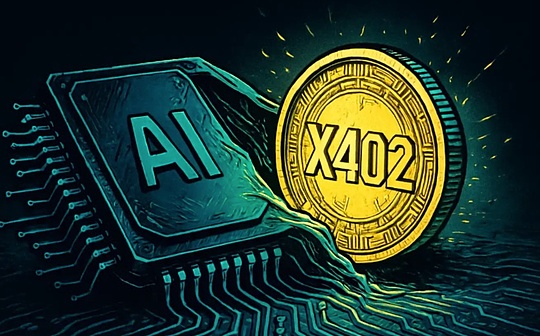
Author: Lucida & amp; Falcon Source: X, @LucidaFund
Guest: zheng @znq_626
-
Lucida Founder
-
2019 BGAIN Digital Assets Trading League’s first season mixed strategy group champion;
-
2020 TokenIninsight Global Asset Quantitative Competition, the April runner -up, May Champion, and season of the composite strategy team;
-
2021 TokenIninsightxkucoin Global Asset Quantitative Competition, the seasonal season of the composite strategy team;
Vivienna @vv_watch
-
Builderrocket Accelerator Research Partner
-
2017
-
EX Foxconn’s Blockchain Investment Fund for investment research
-
EX Huobi Defi Researcher
-
Optical macro research
Hiahfreedom @highfree2028
-
2016
-
Compound background
-
An current brokerage researcher
-
Good at the cycle selection based on the liquidity analysis and macro analysis of the US dollar
Albert @AssAssineDen
-
Quantitative private equity fund manager
-
Quantitative researcher of the front foreign exchange market, do statistical arbitrage and relative value policy
-
Good at Non-Delta strategy and macro research
-
Pay attention
one,Unveil the macro analysis framework
Zheng@lucida:
With the development of the Crypto industry, the correlation between the market and the macro economy is getting higher and higher, and macro becomes more and more necessary to analyze the market.Today, I will talk about macro -related topics with you.From the first question, we are invited to share our own analysis of the framework and methodology of the macroeconomic in order, as well as the underlying logic.
Highfreedom:
For macro -analysis for Crypto, two parts are composed of two parts: the first category is off -site (non -Crypto Native) macro, and the second category is the macro -on of the field (Crypto Native, the core is the data analysis on the BTC chain) analysis)
For the macro outside the field, my analysis framework is a bit like an inverted triangle, which is divided into three levels.
The first layer is a variety of data, such as employment, GDP, inflation, PCE, etc.
The second layer is to summarize the data.The data in the first layer seems to be messy, but in fact we can eventually divide various data into two categories: economic good or bad data and inflation high data.The ultimate goal of the Federal Reserve and fiscal policy (how the government spend money, etc.) that formulates monetary policy (increase interest rate cuts, expansion tables, etc.) is: maximize employment and price stability.In other words, the core goal of these two institutions is to ensure that the economy is good and inflation.
The third layer is the specific composition of the US dollar liquidity and its future expectations.The main composition of US dollar liquidity includes bank reserves, the Fed’s balance sheet, the balance of the Ministry of Finance, and the balance of overnight reverse repurchase accounts.We need to pay attention to the changes in these factors, and the refinancing announcement issued by the Ministry of Finance every quarter to judge the current and future US dollar liquidity.
Moreover, the two core factors of employment and prices affect each other to some extent.For example, the Fed will consider employment and inflation data at the same time when deciding whether to cut interest rates or stopping the table.Therefore, we need to comprehensively analyze these data in order to more accurately predict changes in the liquidity of the US dollar.By re -financing announcements and various economic data every quarter, we can better understand the operations of the Ministry of Finance and the Federal Reserve, thereby predicting the future trend of the US dollar liquidity.
The above are the so -called extra -field factors. Outside factors mainly refer to those that are not native to cryptocurrencies, such as the above macroeconomic indicators, policy changes, and market emotions.Although these factors are not directly derived from the cryptocurrency market, their impact on the market is significant because they define the external environment of the market and the expectations of investors.
The second category is the macro field: the macro on the field refers to those data and analysis directly derived from the cryptocurrency market. The core is the data on the Bitcoin chain.These data include changes in the amount of currency holdings and profitability of long -term and short -term currency holders.By analyzing the data on these chains, we can more deeply understand the dynamics of the market, including investor behavior and market trends.
These two sets of analysis methods have their own emphasis. Outside factors provide us with a macro perspective, and in -site factors allow us to insight into the cycle and rhythm of the internal operation of the encrypted market.In the analysis of the cryptocurrency market, it is very important to combine these two perspectives. They together constitute a comprehensive macro analysis framework.
Albert:
I want to add it. In addition to the policy influence of the Fed and the Ministry of Finance, we should also pay attention to micro -economic factors such as bank deposits.For example, when facing high interest rates, ordinary investors may choose to deposit funds into banks to obtain interest, but this may also affect market liquidity.Historically, after the banking industry crisis in the 1990s, the growth rate of deposits has slowed significantly.After the SVB incident in 2023, we saw a similar situation, the scale of bank deposits declined, while the stock market and other asset markets began to return to growth.In addition, international liquidity, such as the Japanese -American arbitrage transaction of the Bank of Japan, also brings additional liquidity resources to the market.
In the high interest rate cycle, people tend to deposit funds into banks to earn interest.However, when banks are facing operating risks, investors may turn their funds to stock markets or other assets, such as short -term Treasury bonds.At present, the yield of short -term US Treasury bonds is close to 5%, which has attracted many investors.At the same time, investors may also choose to invest in stocks, derivatives or ETFS to seek higher returns.
Of course, when facing the banking crisis, investors may re -evaluate the security of depositing funds into banks.They may choose to invest funds into the stock market or other assets to seek relatively safe returns.This situation occurred in the 1990s and 2019.In addition, the performance of currency market funds can also be used as an indicator of liquidity.Since 2023, the growth rate of currency market funds has reached a new high of more than 20 years, which reflects the market’s demand for liquidity.
Ideally, we should consider the mobility of market factors, including the liquidity of other countries.However, in actual operation, B is more difficult, and we may not be able to incorporate all factors into analysis.For example, the Carry Trade of Japan and Europe has an impact on the market, but it is difficult to quantify.We usually focus on the United States, and the influence of other countries is regarded as secondary factor.Nevertheless, we cannot ignore the impact of the offshore US dollar market.
Vivienna:
On Twitter, I published an article discussed the impact of American liquidity on cryptocurrency prices.I mainly pay attention to domestic factors, not overseas and US dollars, because the latter’s data is difficult to quantify.When analyzing the price of Bitcoin, I divided the influencing factors into three categories:
The first is observable index: including federal fund interest rates, national debt yields, US dollar indexes and gold prices.These indexes are the foundation of market expectations, but their relationship with risk asset prices is not directly linear.For example, interest rate hikes usually lead to tightening market liquidity, which is not conducive to rising risk assets, and the opposite of cutting interest rates.However, the complexity of this influence by monetary policy transmission mechanism, economic, financial, and emotional cycle will not directly affect market liquidity at the moment when the implementation of monetary policy is implemented.
The second is liquidity indicators: such as the balance of the Federal Reserve’s asset liabilities, reverse repurchase operations, and account accounts of the Ministry of Finance.These indicators directly affect the liquidity of the US dollar, thereby affecting the price of growth risk assets such as Bitcoin.For example, the Fed’s expansion, reducing repurchase, or the consumption of TGA accounts consumed by the Ministry of Finance will increase market liquidity and facilitate risk assets.
The third is the index of emotional influence: including the drawing map, the speech of the Fed officials, the labor market data, and inflation data.These data have a short -term impact on market expectations and emotions, affecting small cycles of transactions.But it is worth noting that traders should pay attention to changes rather than simply data itself.
two,How macro factors affect the encryption market
Zheng@lucida:
So how is your macro analysis framework applied to the encryption market? Or, how do these framework guide your transactions and how to help you make money?
Highfreedom:
I think the way to make money can be understood from three perspectives:
The first is to earn big money: This refers to buying and holding stocks when clarifying market trends, not frequent transactions, and keeping patience.
The second is to earn fluctuations: this usually involves quantitative transactions, using the volatility of the market for sale, and does not pay attention to the specific direction of the market.
The third is to earn money: During the bull market, funds are put into the market and obtained high interest through borrowing to traders required.
I personally think that the macro factors mainly affect the cryptocurrency market through two aspects: liquidity and penetration.The liquidity determines the amount of funds in the market, and the penetration rate is the proportion of capital distribution to cryptocurrencies such as Bitcoin.
At the operational level, I tend to be full of mainstream currencies such as Bitcoin during the bull market, especially Bitcoin.This is the first one I just said: earning money in the direction.
At the same time, I will use some funds to do more money, but avoid frequent multi -short operations in the bull market.I think the key is to identify the high point and low point of the market. This requires a comprehensive consideration of multiple sources of information, such as the cost of miners, market popularity, borrowing interest rates, capital rates, etc.
The market performance in the second half of 2021 shows that the high point of Bitcoin prices has a successive relationship with the Nasdaq index and US dollar liquidity.This shows that when the liquidity reaches its peak, risk assets may need to be exited.Therefore, I will pay close attention to liquidity indicators to determine whether the market is close to the top or bottom.
At the same time, I think that information is positive, that is, through information from different angles of information to form a comprehensive market judgment. This method helps us to grasp the high and low points of the market, so as to make more reasonable transaction decisions, Try to reduce the possibility of operating errors.I will also adjust my risk control strategy based on market conditions to ensure that I can protect my investment when market fluctuations.
Vivienna:
I recommend a book “Professional Speculation Principles” on Twitter. The author Sporandi proposed two basic principles of market analysis and prediction: one is the result of the market trend of the market. These forces are subject to the political system andThe influence of policy activities; the other is the psychological state of market participants that determine the way and time of the price trend.
Macro analysis should pay attention to these two points.First of all, we need to understand the basic principles of politics and economics, such as economic indicators, production consumption cycles, investment and savings behavior, and technological innovation development path.Secondly, the prediction of market participants’ psychological state is more guided in transaction.Macro analysis is often questioned because many people have overdoed economic and financial data, and they have ignored the expected changes.Successful transactions not only need to analyze the status quo behind the data, but also pay attention to how to change expectations and how market games are carried out.
Soros once pointed out that economic history is based on the wrong lies, not truth.The way to make a lot of money is to analyze the error trend, follow the trend, and get away before being demolished.This reflects the above principles, because to distinguish the error trend, we must first know what is correct.For example, the government adopts a high interest rate policy when the government declines, or attempts to adjust interest rates through monetary policy to stimulate the economy. If the conduction mechanism of these policies is not understood, it cannot judge its consequences, nor can it be escaped before most participants discovered the problem.
Albert:
Regarding how the macro analysis framework affects the cryptocurrency market and our trading strategy, I will divide the following points:
First of all, since 2020, we have discussed a long-term theory-liquidity chain theory.According to risk analysis, we sorted different assets such as commodities, foreign exchange, and stocks in accordance with a chain.The top of the chain is cash. As the basis of all assets, the risk of cash is extremely low. It is almost zero except for inflation.If cash is risky, it means that the global market may face reset.
The second layer of liquidity chain is bonds, especially government bonds. They are basic fixed income assets and are considered low -risk assets.The third floor is corporate bonds and stocks because they provide relatively higher benefits.The fourth floor is commodity, with higher volatility and risk.The last layer is cryptocurrency because they are at the end of liquidity chain and have the highest volatility and risk.
This theory also explains the underlying reasons for the phenomenon of “high points of Bitcoin prices and the Nasdaq index and US dollar liquidity” mentioned by Highfreedom just now.
When liquidity release, the first affecting the foreign exchange market, then the bond market, and then the stock market, the commodity market, and finally the cryptocurrency market.Instead, the process of withdrawal is reverse when liquidity is tightened.This flow of liquidity has an important impact on the market.
As traders, we use this framework to guide our transactions.For example, when we see liquidity start to tighten or release, we can predict the market’s response and adjust our trading strategy accordingly.We will pay close attention to inter -bank interest rates and bond futures, because these are the first reactions of market changes in the market.We will then analyze the option market, because option prices reflect the market’s expectations for future volatility.
Our trading strategy is mainly based on these macro expectations.For example, in the interest rate hike cycle, market emotions tend to look at the loser, and we will configure the sedentary power when the volatility is low.At the same time, we will adjust our option combination according to market sentiment and expectations to earn the return of volatility.
Our strategy depends on the return of volatility, especially the near -end volatility.The far -end volatility may remain high for a period of time and will not return immediately.Therefore, we are usually buyers at the remote end to obtain value through cross -term configuration.Our combination strategy is to earn the value difference between them by holding recent and long -term options.
three,The location of Bitcoin in large categories
Zheng@lucida:
The next question will be relatively easy, and we have already mentioned indirectly in the previous conversation, that is, the status of Bitcoin in traditional assets.I remember in 2019, especially in the first half of the year, the market generally regards Bitcoin as a shelter asset. At that timeThe higher the coming.
However, with the bull market cycle from 2020 to 2021 and the situation in 2022, the public gradually accepts Bitcoin as an asset that is more risk than traditional risk assets.I want to know if everyone recognizes the same positioning, or whether Bitcoin’s position in large assets is described.
Highfreedom:
I think this description is quite accurate.I think Bitcoin is undoubtedly a risk -risk asset in the short while.But in the long run, I am confident that Bitcoin can develop into insurance assets.At present, we are growing in Bitcoin as a hedging asset.I think there are several basic elements that need to be safe in risk -free assets. We can discuss whether these are necessary conditions:
The first is that the market size is large: the market size of assets needs to be large enough to be able to enter and exit freely.
The second is that the volatility is reduced: Although the volatility in Bitcoin history is great, it has now decreased significantly, approaching or sometimes even lower than the volatility of gold.
The third is the rationality and stability of market participants: As market participants gradually transform from people in the circle to more traditional and more rational financial institutions, the market may be more stable.
When these conditions are met, Bitcoin may become a mature assets, with a large market size and lower volatility, similar to gold.At that time, even a major event would only have a slight impact on the price.
Vivienna:
I think Bitcoin is called digital gold, and its comparative logic with gold is widely recognized.The total amount of bitcoin is fixed, similar to the scarcity of gold, and it can be used as a means of value storage and payment, which is highly consistent with the characteristics of gold.
However, the pricing of gold prices is a complicated issue.When risk aversion such as war is high, the risk aversion characteristics of gold are particularly obvious.If the basic liquidity of the market is not tight, but the war factors are significant, Bitcoin may follow the gold trend at this time, because the main factors affecting the price of gold are risk aversion.Correspondingly, the price of Bitcoin will also be affected by risk aversion.
However, if the basic liquidity of the market itself is insufficient, for example, when the global or U.S. economy enters the decline cycle or there is expected decline expectations, even if the risk aversion is high, the transaction volume cannot be driven.This explains why other markets did not respond significantly when certain geopolitical conflicts were fierce.In this case, the basic liquidity determines the bottom line of the price, and Bitcoin is closer to risk assets.
Therefore, the correlation between gold prices and Bitcoin prices mainly depends on the market basic liquidity at the time and the market’s views on Bitcoin attributes.Most of the time, Bitcoin prices are highly related to U.S. stocks.In the process of economic atrophy, investment atrophy, and deleveraging, Bitcoin will take the lead in reacting and when the economic recovery, investment regression plus leverage, will also react in advance, and its acceleration is even greater
Gold holding is usually controlled within 5%of global asset management companies, because the influencing factors of gold prices are very uncertain.Although gold has practical applications, it is more affected by speculation and emotions, and lacks fundamental analysis.This makes it difficult to explain to LP (limited partners) why investing in gold can only be based on predictions on future economic recession or risk. This is very subjective and difficult to convince.
Bitcoin is facing the same problem, and it is difficult to convince capital companies and LP to allocate funds to this asset.Although gold is regarded as a hedid asset, its ability to fight inflation is mainly reflected in the long term.Bitcoin may also be the same, and its status may be very high in the future, especially with the increase of Bitcoin mining difficulty.
If more traditional financial management companies enter the Bitcoin investment field, the investment ratio of Bitcoin may move closer to gold.
Albert:
From a macro perspective, gold and Bitcoin have multiple attributes. They can be both risk assets or risk aversion assets.This phenomenon seemed to be contradictory at first, but in fact, there are inherent logic.
First of all, whether it is gold or Bitcoin, it is a shelter of funds at the time of crisis.During the war or other turbulent periods, asset transfer is restricted, and liquidity will seek safe harbor.Investors tend to transfer funds to assets that are easy to cross -border, such as gold and Bitcoin.This has led to a sharp rise in prices of these assets during the crisis.
However, during the market stability, the attributes of gold and bitcoin are different.Due to its high volatility, Bitcoin is more manifested as risk assets. Its price fluctuations are related to the stock market. In part, there are many leveraged tools in the Bitcoin market and many market participants, resulting in a fierce price fluctuations.
In a stable environment, investors tend to pursue stable investment portfolios to avoid significant fluctuations in asset prices.Therefore, they may be more inclined to allocate some traditional assets, such as gold and other commodities.Due to its long history and stable value, gold is usually controlled within 5%of the investment portfolio.
In addition, the prices of gold and Bitcoin are also affected by market expectations.When liquidity is sufficient, investors may seek higher returns assets. When Pang is tightening, they may return to traditional risk shelter assets.
Finally, Bitcoin and Gold as the status of risk shelling assets depend on the stage of market environment and macroeconomic cycles.Under certain circumstances, they may show risk aversion characteristics, and in other cases, they may be more reflected in risk assets.
Four,What is the starting point of macro analysis?
Zheng@lucida:
Next, we discuss a question. When analyzing the macroeconomic, what data sources do you usually collect data, or do you have some non -traditional analysis tools? Is there a more exclusive information source to share?
Highfreedom:
I wrote a little code on TradingView and made a dashboard to continue to observe and analyze the macro -liquidity.These tools are no different from the data provided by the Fed and the Ministry of Finance’s official website, but I integrate them into a single interface for easy continuous observation.In addition, I also paid attention to some analysts, especially a Taiwanese blogger. He gathered some interesting data, such as the loan interest rate of different exchanges.These data can reflect the operating trends of large households and retail investors, as well as the sequence between them.I think this data is very valuable, but I have not successfully applied his tools.
I have been looking for data on US debt, especially the daily circulation volume of long -term and medium- and long -term & amp; long -term issuance (net issuance is worth the amount of bonds issued on that day to reduce the amount of bond expired on the day).These data are very important for understanding the current liquidity of the present and next period of time.At present, I can only download the data manually from the website of the US Treasury and process it myself.If you know a better data source, please recommend contact.
Albert:
I want to add some macroeconomic data sources we are paying attention to.Because I mainly pay attention to risk products, the data services I use include Spotgammamenthorq. They provide US stocks, bond markets, and other commodity option data. These data are quite comprehensive.
In addition, for the US stock market, there are services such as GR, they provide real -time data, and the price is relatively cheap.If you need more deeper data, such as data in the gold or inter -bank market, you may need to rely on the industry’s internal resources.
For the cryptocurrency market, the first recommended data source is Amber DataDerivative. They are very comprehensive in option data and have obvious advantages.In addition, the service provider provides real -time data for exchanges such as CME.
We also need to pay attention to the data of some exchanges, especially those agencies’ transactions accounted for exchanges, such as Deribit, 80%of their transaction volume comes from institutions and 20%from professional individual investors.Such data can reflect the expectations of market institutions and have a great influence on the market.
In addition, exchanges like Bitfinex can be regarded as the inter -bank market of the cryptocurrency market. Their short -term borrowing interest rates can reflect the market’s risk -free interest rates, which is very important for calculating the risk premium in the encrypted market.
Compliance exchanges, such as Coinbase and their large household transaction data, are also important, especially dark pool trading data may have an impact on the market.
Overall, although we can get a large number of market data, the final transaction decision still depends on our own risk management capabilities.Our goal is to maintain no loss or small profit in most cases, and in a few cases, we achieve big money.
five,The reciprocity and outlook of this round of cycle
Zheng@lucida:
We turn to the last question and think about the future market.
I will share my point first: The market generally expects that the Federal Reserve ’s interest rate cuts will bring huge liquidity in the second half of this year or next year. In addition, many favorable factors such as Bitcoin are halved. Many people expect to copy the bull market in 2021.However, I have a very pessimistic attitude towards this generally optimistic expectation, because the highly consistent market expectations in history are often accompanied by huge potential risks.
Especially for institutional investors such as public funds in the United States, although they belong to the types of agencies that have held long -term positions, they also make adjustments to investment decisions based on market conditions, and they will not blindly “chase high”.
Highfreedom:
My opinion is very similar.This year’s market owner Shenglang began in November last year, especially after the spot ETF transaction in January, the market has fluctuated significantly.The liquidity and penetration rate of the one -time intercourse are rising, but it is mainly the participation of retail investors. The real institutional investors have not yet entered the market on a large scale.For example, 80%to 85%of the fund inflow of spot ETF comes from retail investors.The liquidity in the second quarter decreased, and the penetration rate was stagnant.My outlook for the third and fourth quarters is that I hope the liquidity will remain stable, and the penetration rate can be improved due to the further participation of institutional investors.
In my opinion, interest rate hikes do not immediately change liquidity, but change the market’s expectations for future liquidity.My question is whether it can still appear as wide finances and wide monetary policy environments like 2021. At present, it seems that this possibility is not much high.Therefore, I have a cautious attitude towards the future performance of the market, hoping not to have excessive optimism expectations.
The market may not change much in the short term, and liquidity is expected to have 4 to 5 interest rate cuts in the next 15 months, which provides stable expectations for the market.But the real liquidity release will be slow, and it is unlikely that large -scale rapid changes will occur.Unless a serious economic recession or crisis occurs, it is unlikely that the policy environment of wide fiscal and wide currencies will occur again.
So if a serious economic recession occurs, the probability of interest rate cuts may be the so -called “asymmetric interest rate cut”.The previous interest rate hikes were symmetrical. For example, the federal benchmark interest rate was used from low to a high position for one year, so it was almost one year in turn from the high position to the low position.This violent interest rate hike started from 0-0.25 in March 2022 to 55.25 in May 2023. It took about a little more than a year.slow.
Vivienna:
My conclusion is relatively simple, similar to everyone.From July and August this year to the end of the year, the market may face less optimistic liquidity.Even if there is a rate cut, there may be only one time. Although this provides positive expectations for the market, it will not change the status quo fundamentally.
The current economy has not fallen into decline, and the stock market may continue to rise.People ‘lives seem to be too affected, and deposits and dividends can still fill their family savings and promote consumption. However, if inflation continues to rise, it may trigger transaction expectations for the stagflation cycle.If you continue to maintain high interest rates next year, even in some cases need to further raise interest rates, and the Ministry of Finance does not relax the policy, which may lead to more liquidity next year.For markets that depend on liquidity such as Bitcoin, this is definitely not good news.
As for the desire to enter the market on a large scale, I think this is more of expectations rather than reality.In the case of poor current basic liquidity, insufficient understanding of cryptocurrencies, and high volatility, institutional investors are unlikely to heavy -duty or build a large -scale position.This expectation may be too ideal, and the actual situation may not be as expected.
Albert:
At present, the market is expected to decide in the short term, especially for Bitcoin.Although the market volatility may increase in July due to factors such as the expiration of options, in the long run, the asset allocation cycle may promote rising prices.However, if the market wants to increase, it may need to rely on two factors: one is a large amount of allocation of institutional investors, and the other is the further improvement of investors’ emotions.However, the rise in this emotion may not be healthy because high capital costs and high volatility are difficult to maintain for a long time.
My opinion is that the market rising will be a slow process, because the record of market participants is a gradual process.The use of derivatives and leverage is difficult to promote the market in the short term.In this case, the operation of the market businessmen may be an important factor affecting the market price trend.The macro factors in the market may only be a factor that promotes the hedging behavior of the market business, not directly acting on the price.This may make the market look more irregular, increasing the difficulty of implementing CTA strategies.
In general, there may not be a large -scale collapse or rapid rise in the market in the short term, but a slow and long process.Liquidity will not rise and fall, unless a serious economic recession occurs.Investors should be cautious and pay attention to the trend trends of institutional investors and changes in market emotions.








